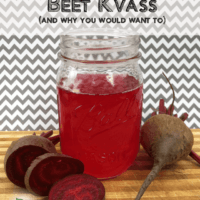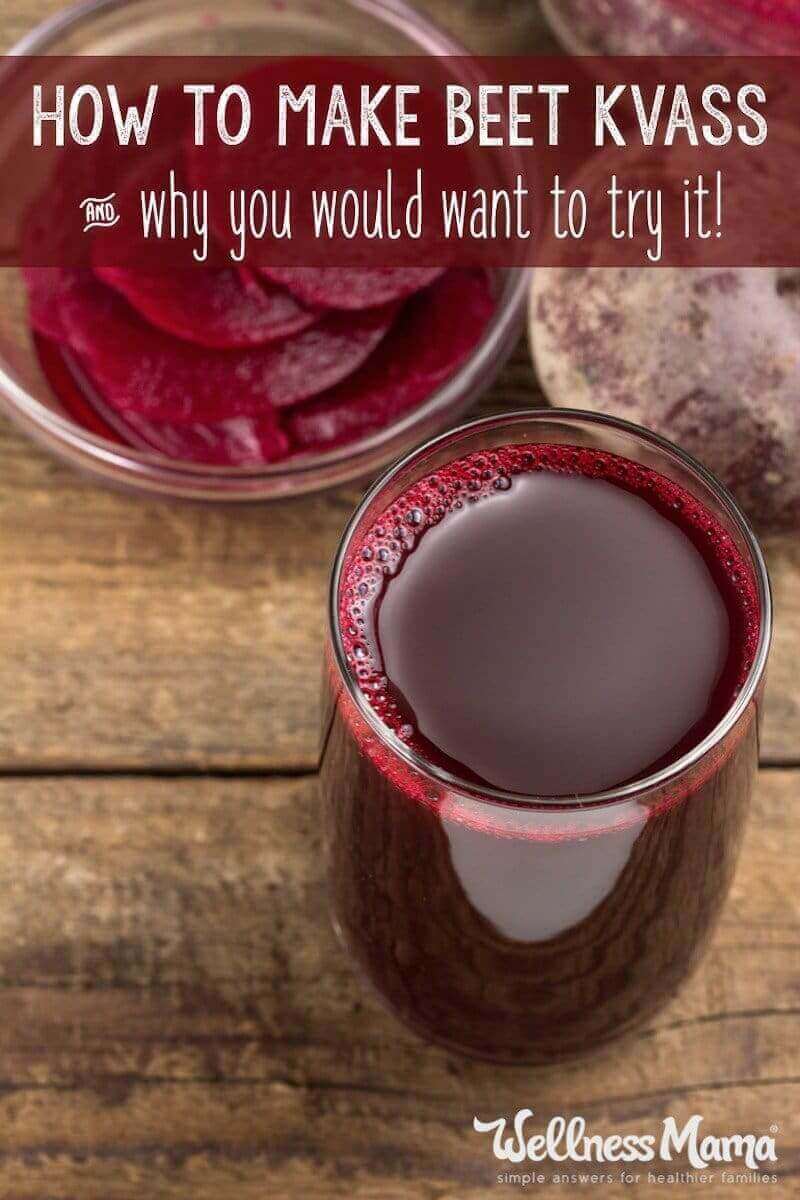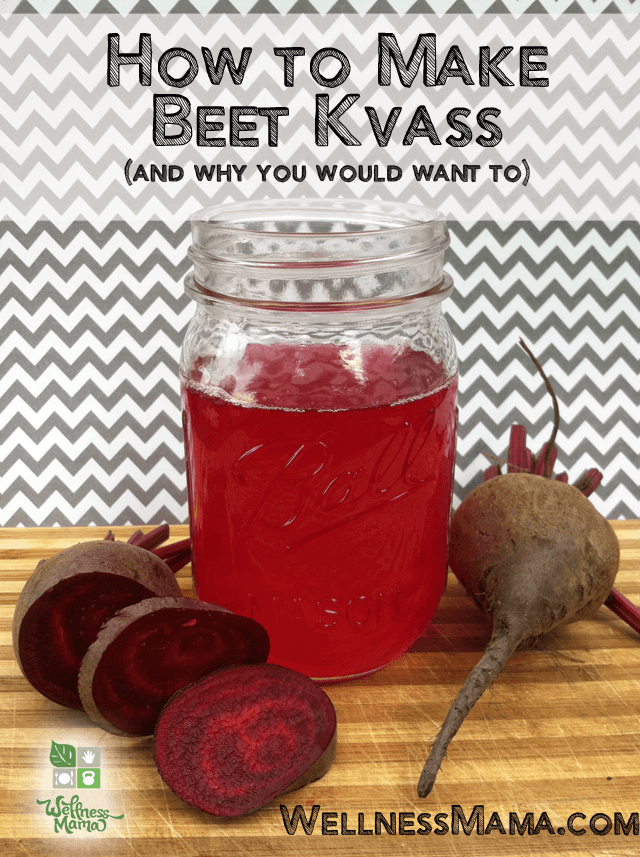I must admit that when I first got the book Nourishing Traditions, beet kvass was one of the recipes that I glazed over and didn’t plan on making. I wasn’t a huge fan of beets then (no worries: I have since discovered this delicious roasted beet salad), and I didn’t even know what kvass was, so I steered clear of it.
When I finally tried kvass, the taste wasn’t as bad as I expected and the health benefits were more than I expected. I’m a big fan of fermented foods like sauerkraut and fermented drinks like kombucha and water kefir. Beet kvass is a nice mix of the two …
Kvass is salty and earthy tasting and after a day or two adjustment, I found that I really like it and my body is now craving it.
What is Kvass?
Kvass is a traditional eastern European beverage that was originally made from fermenting stale bread.
It is also recognized that kvass is safer to drink than water. Tolstoy describes how Russian soldiers took a ladle full of kvass before venturing from their barracks onto the Moscow streets during a cholera epidemic. Because kvass protects against infectious disease, there is no worry about sharing the glass.
…
Kvass can also be made from beets. The result is not so much epicurean as medicinal, although beet kvass is often added to borscht. No traditional Ukranian home was without its bottle of beet kvass, according to Lubow A. Kylvska, author of Ukranian Dishes, “handy and ready when a pleasing, sour flavor had to be added to soups and vinaigrettes.
Folk medicine values beets and beet kvass for their liver cleansing properties and beet kvass is widely used in cancer therapy in Europe. Anecdotal reports indicate that beet kvass is an excellent therapy for chronic fatigue, chemical sensitivities, allergies, and digestive problems.”
Nourishing Traditions explains that beet kvass is:
valuable for its medicinal qualities and as a digestive aid. Beets are loaded with nutrients. One glass morning and night is an excellent blood tonic, promotes regularity, aids digestion, alkalizes the blood, cleanses the liver and is a good treatment for kidney stones and other ailments.
My kids love kvass because of the color and it makes a beautiful addition to salad dressings, sauces, or soups because of its bright hue.
Homemade Beet Kvass Recipe
I’ve found it easiest to make kvass with whey (here is how to make whey at home — not the same as protein powder!) or the juice from sauerkraut, but it can be made with just sea salt, though it may take a little longer.

Beet Kvass Recipe
Servings
Ingredients
- 2-4 beets
- ¼ cup whey (or juice from sauerkraut)
- 1 TBSP sea salt (or Himalayan salt)
- filtered water
Instructions
- Wash the beets and peel if not organic or leave skin on if organic
- Chop the beets in to small cubes, but don't grate.
- Place the beets in the bottom of a half gallon glass jar.
- Add the whey/sauerkraut juice and salt. If you don't want to use whey or sauerkraut juice, you can double the salt instead, though it may take longer to ferment.
- Fill the jar the rest of the way with filtered water.
- Cover with a towel or cheesecloth and leave on the counter at room temperature for 2 days to ferment.
- Transfer to refrigerator and consume as desired. I drink 3-4 ounces each morning and night.
Nutrition
Notes
Have you ever made beet kvass? What did you think of it?



Leave a Reply